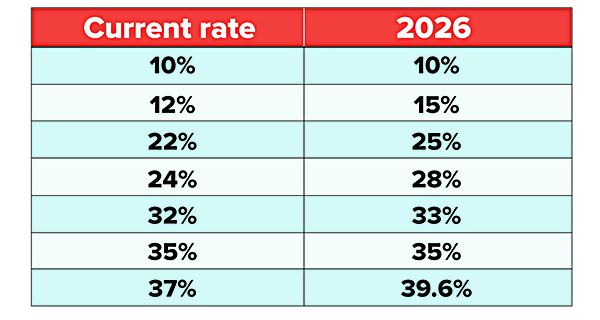How Taxes Impact Your Retirement-Income Strategy


Retirees face several unique challenges when managing their income, particularly when it comes to taxes. From understanding how taxes relate to Social Security and Medicare to determining when to tap taxable and tax-advantaged accounts, individuals must juggle a complicated mix of factors.
Social Security and Medicare
People are sometimes surprised to learn that a portion of Social Security income becomes federally taxable when combined income exceeds $25,000 for single taxpayers and $32,000 for married couples filing jointly. The taxable portion is up to 85% of benefits, depending on income and filing status.1
In addition, the amount retirees pay in Medicare premiums each year is based on the modified adjusted gross income (MAGI) from two years earlier. In other words, the cost retirees pay for Medicare in 2023 is based on the MAGI reported on their 2021 returns.
Taxable, Tax-Deferred, or Tax-Free?
Maintaining a mix of taxable, tax-deferred, and tax-free accounts offers flexibility in managing income each year. However, determining when and how to tap each type of account and asset can be tricky. Consider the following points:
Taxable accounts. Income from most dividends and fixed-income investments and gains from the sale of securities held 12 months or less are generally taxed at federal rates as high as 37%. By contrast, qualified dividends and gains from the sale of securities held longer than 12 months are generally taxed at lower capital gains rates, which max out at 20%.
Tax-deferred accounts. Distributions from traditional IRAs, traditional work-sponsored plans, and annuities are also generally subject to federal income tax. On the other hand, company stock held in a qualified work-sponsored plan is typically treated differently. Provided certain rules are followed, a portion of the stock’s value is generally taxed at the capital gains rate, no matter when it’s sold; however, if the stock is rolled into a traditional IRA, it loses this special tax treatment.2
Tax-free accounts. Qualified distributions from Roth accounts and Health Savings Accounts (HSAs) are tax-free and therefore will not affect Social Security taxability and Medicare premiums. Moreover, some types of fixed-income investments offer tax-free income at the federal and/or state levels. 3
The Impact of RMDs
One income-management strategy retirees often follow is to tap taxable accounts in the earlier years of retirement in order to allow the other accounts to continue benefiting from tax-deferred growth. However, traditional IRAs and workplace plans cannot grow indefinitely. Account holders must begin taking minimum distributions after they reach age 73 (for those who reach age 72 after December 31, 2022). Depending on an account’s total value, an RMD could bump an individual or couple into a higher tax bracket. (RMDs are not required from Roth IRAs and, beginning in 2024, work-based plan Roth accounts during the primary account holder’s lifetime.)
Don’t Forget State Taxes
State taxes are also a factor. Currently, seven states impose no income taxes, while New Hampshire taxes dividend and interest income and Washington taxes the capital gains of high earners. Twelve states tax at least a portion of a retiree’s Social Security benefits.
Eye on Washington
Finally, both current and future retirees will want to monitor congressional actions over the next few years. That’s because today’s historically low marginal tax rates are scheduled to revert to higher levels in 2026, unless legislation is enacted (see table).
Help Is Available
Putting together a retirement-income strategy that strives to manage taxes is a complex task indeed. Investors may want to seek the help of a qualified tax or financial professional before making any final decisions.4


